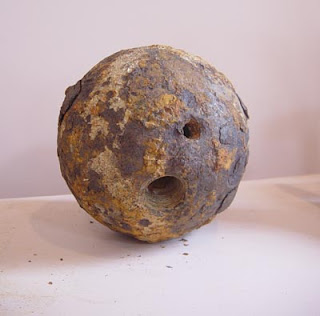This cannonball is now in the possession of the Onslow Historic Society based at Ngaio, Wellington.
24 pounder shrapnel shells were useually fired from 24 pounder howitzers and 24 pounder Coehorn Mortars - not from long guns.
A 24 pdr Coehorn Morter.
The shell sometimes went into the barrel fuse first so that the flash from the gunpowder propelling charge would light the slow burning gunpowder core in the Boxer fuse - or in some cases the fuse might be lit first.
The shrapnel shell cannon ball was designed by Lieutenant Henry Shrapnel of the British Royal Artillery in 1784 by packing musket balls and gunpowder into a hollow cannonball.
- It was 1803 before Shrapnel - now risen to the rank of Captain - managed to persuade his 'superiors' that he had a useful airburst WMD (weapon of mass destruction) for use against the enemy's massed troops.
Shrapnel's round ball evolved into an artillery shell that looked very much like a modern shell and was manufactured in much the same way. It also performed the same function: the delivery of lead balls over long distances in large quantities at high velocities.
Henry Shrapnel rose to the rank of lieutenant-general on 10 January 1837 and died in 1842
Marty K.







No comments:
Post a Comment